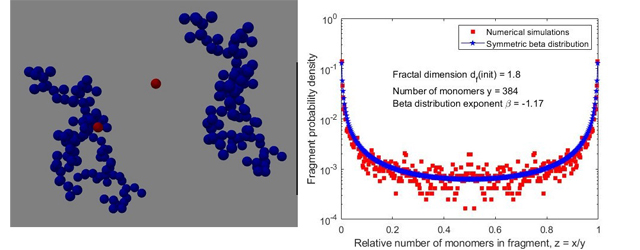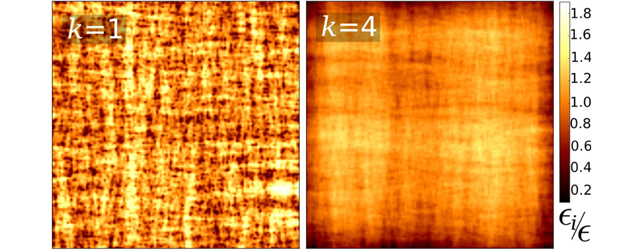Accueil
Science puts historical claims to the test (Vol. 50, No. 5-6)

The latest analytical techniques available to scientists can confirm the validity of historical sources in some cases, and suggest a need for reconsideration in others.
As any historian will tell you, we can rarely take the claims made by our ancestors at face value. The authenticity of many of the artefacts which shape our understanding of the past have been hotly debated for centuries, with little consensus amongst researchers. Now, many of these disputes are being resolved through scientific research, including two studies recently published in EPJ Plus. The first of these, led by Diego Armando Badillo-Sanchez at the University of Évora in Portugal, analysed an artefact named ‘Francisco Pizarro’s Banner of Arms’ – believed to have been carried by the Spanish conquistador during his conquest of the Inca Empire in the 16th century. The second team, headed by Armida Sodo at Roma Tre University in Italy, investigated a colour print of Charlemagne – the medieval ruler who united much of Western Europe – assumed to be from the 16th century.
D. A. Badillo-Sanchez, C. B. Dias, A. Manhita, and N. Schiavon, The National Museum of Colombia’s “Francisco Pizarro’s Banner of Arms”: a multianalytical approach to help uncovering its history, Eur. Phys. J. Plus 134, 224 (2019)
[Article]
A. Sodo, L. Ruggiero, S. Ridolfi, E. Savage, L. Valbonetti, and M.A. Ricci, Dating of a unique six-colour relief print by historical and archaeometric methods, Eur. Phys. J. Plus 134, 276 (2019)
[Article]
Improving the signal-to-noise ratio in quantum chromodynamics simulations (Vol. 50, No. 5-6)

A new Monte Carlo based simulation method enables more precise simulation for ensembles of elementary particles.
Over the last few decades, the exponential increase in computer power and accompanying increase in the quality of algorithms has enabled theoretical and particle physicists to perform more complex and precise simulations of fundamental particles and their interactions. If you increase the number of lattice points in a simulation, it becomes harder to tell the difference between the observed result of the simulation and the surrounding noise. A new study recently published in EPJ Plus, describes a technique for simulating particle ensembles that are 'large' (at least by the standards of particle physics). This improves the signal-to-noise ratio and thus the precision of the simulation; crucially, it also can be used to model ensembles of baryons: a category of elementary particles that includes the protons and neutrons that make up atomic nuclei.
M. Cè, Locality and multi-level sampling with fermions. Eur. Phys. J. Plus 134, 299 (2019)
[Article]
Fractal agglomerates fragment into dissimilar fragments (Vol. 50, No. 5-6)

Fragmentation occurs everywhere in nature: polymers degrade, soot particles break up, cells divide, volcanic ash fragments, droplets break up in turbulent flow, lung fluid fragments to generate droplets. Nevertheless, little is known about the distribution of fragment sizes when a fractal agglomerate breaks up. The fragment-size distribution upon random bond removal in a linear chain composed of identical units is uniform. How does the distribution change as the morphology of the fragmenting structure changes?
More generally, fragmentation kernels, which depend on the size distribution and the fragmentation rate, have been extensively used in population balance equations. Usually, their analytical form is dictated by homogeneity requirements (as suggested by coagulation kernels) or physical arguments. In this work, the morphology-dependent fragment-size distribution is determined from numerical simulations of fragmenting in silico fractal-like agglomerates. The overarching idea is to map the agglomerate onto a graph via the adjacency matrix, the matrix that specifies the monomer-monomer bonds. Fragmentation occurs via random bond removal. The simulations showed that the distribution is U-shaped, fragmentation into dissimilar fragments, accurately reproduced by a symmetric beta distribution.
Y. DrossinoS, A. D. Melas, M. Kostoglou and L. Isella, Morphology-dependent random binary fragmentation of in silico fractal-like agglomerates, EPL 127, 46002 (2019)
[Article]
New insights into the early stages of creep deformation (Vol. 50, No. 5-6)

Computer simulations show that the evolution of material structures during creep deformation can modify material properties.
The properties of many materials can change permanently when they are pushed beyond their limits. When a given material is subjected to a force, or ‘load’, which is stronger than a certain limit, it can become so deformed that it won’t return to its original shape, even after the load is removed. However, heavy loads aren’t strictly necessary to deform materials irreversibly; this can also occur if they are subjected to lighter loads over long periods of time, allowing a slow process called ‘creep’ to take place. Physicists have understood for some time that this behaviour involves sequences of small, sudden deformations, but until now, they have lacked a full understanding of how creep deformation affects material properties over time. In new research published recently, the authors analysed the characteristic ways in which material structures evolve during the early stages of creep deformation.
D.Fernandez Castellanos, and M. Zaiser, Statistical dynamics of early creep stages in disordered materials, Eur. Phys. J. B 92, 139 (2019)
[Article]







